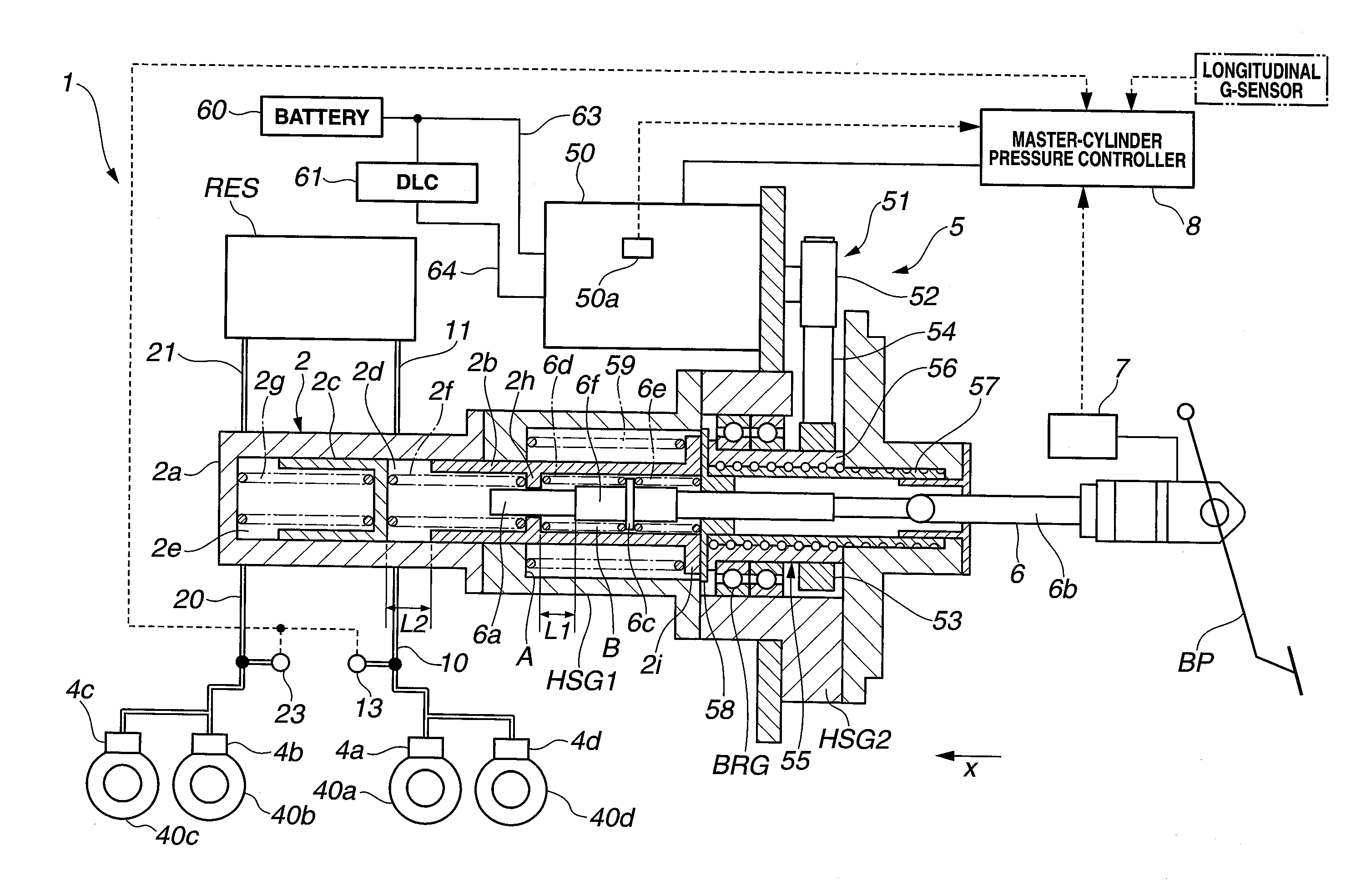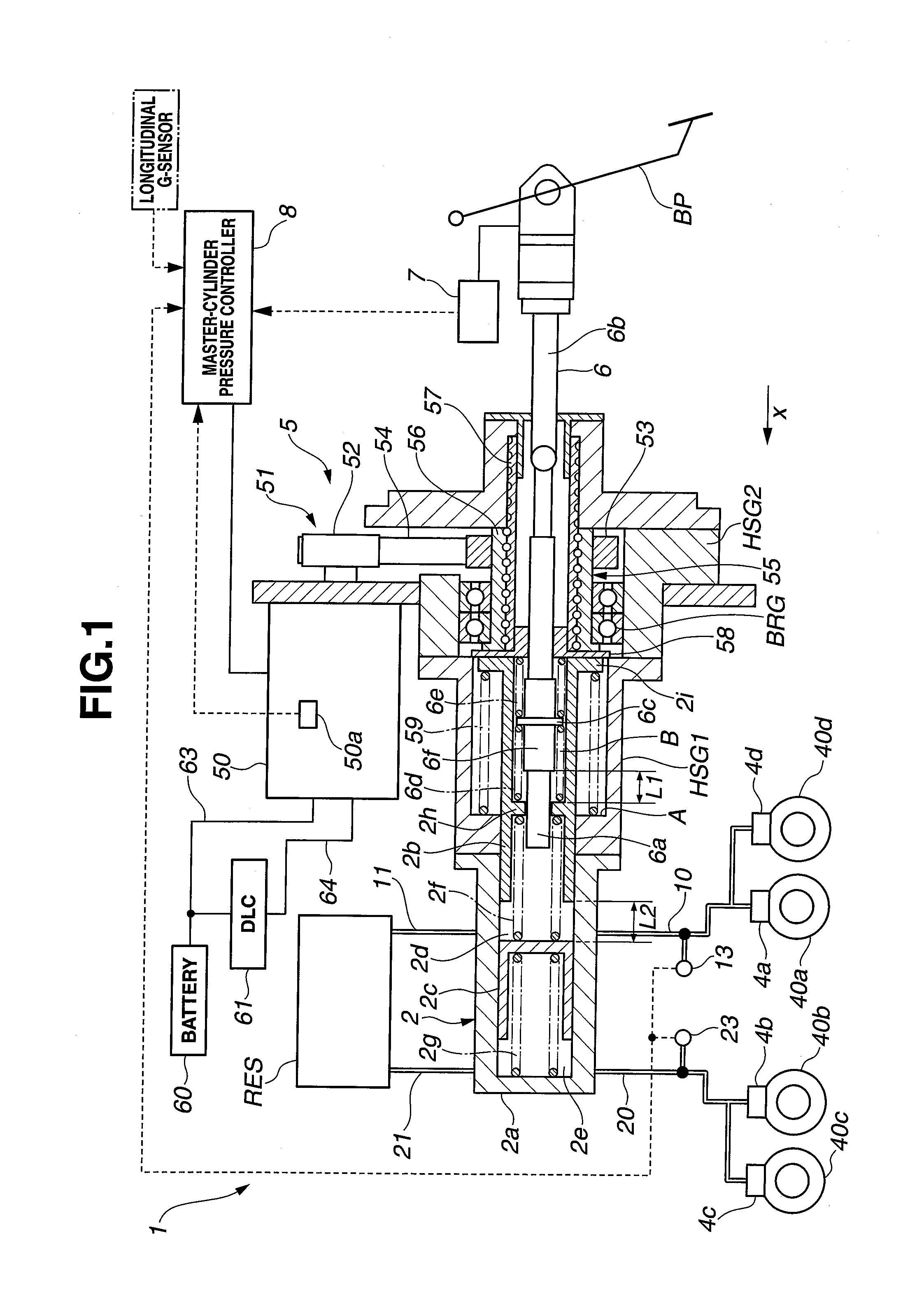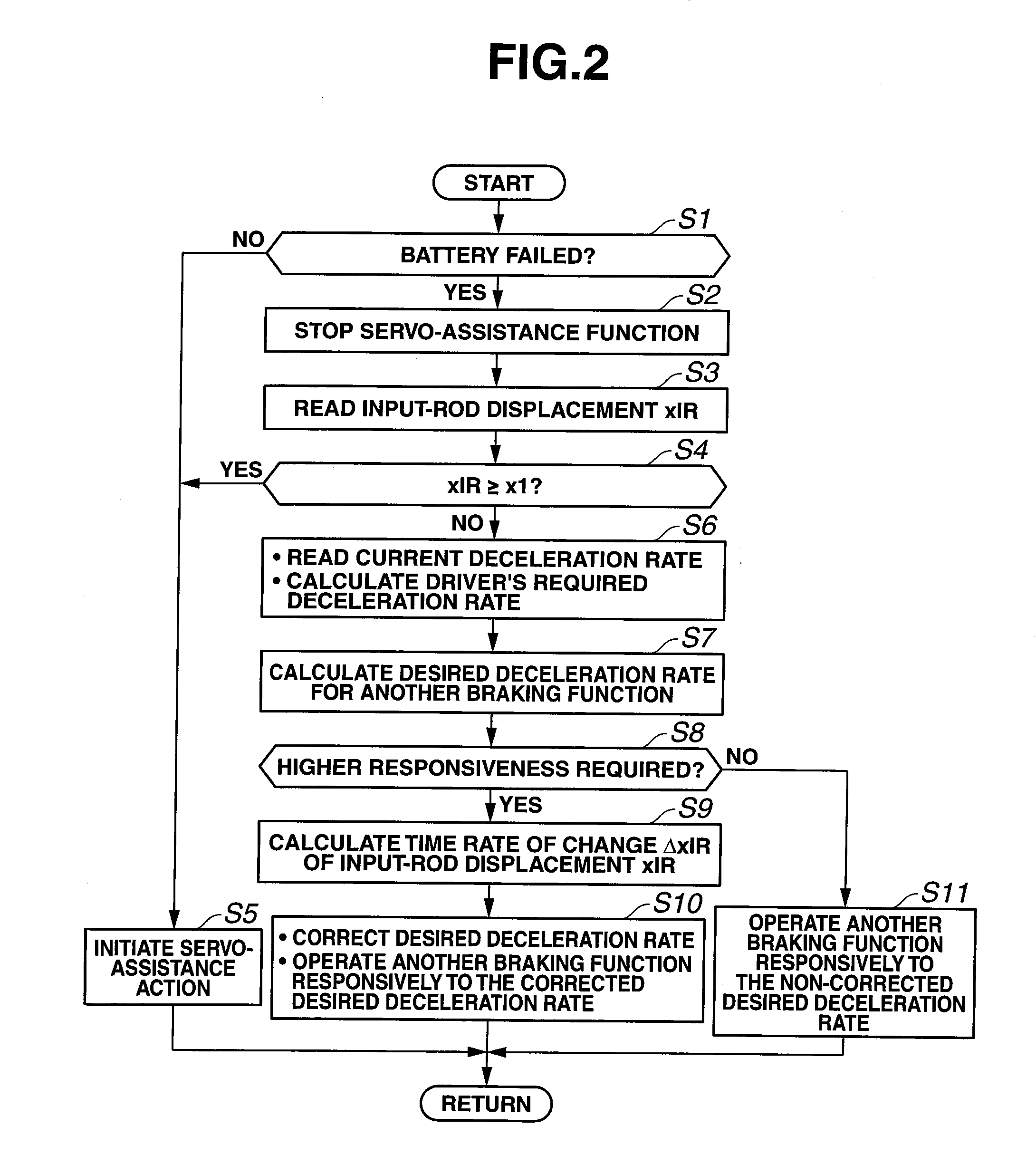Brake device and method of controlling brake device
a technology of brake device and brake device, which is applied in the direction of braking system, rotary clutch, fluid coupling, etc., can solve the problem of large electric current consumed temporarily, and achieve the effect of suppressing an inrush current during a startup and reducing the startup load of an electric booster
- Summary
- Abstract
- Description
- Claims
- Application Information
AI Technical Summary
Benefits of technology
Problems solved by technology
Method used
Image
Examples
first embodiment
[0021]First of all, the construction of the brake device of the first embodiment is described.
[0022]FIG. 1 is the general system diagram of the brake device 1 of the first embodiment. Brake device 1 of the first embodiment is mounted on a motor-driven electric vehicle. Brake device 1 has a dual brake system master cylinder (a dual master cylinder) 2, a reservoir tank RES, wheel cylinders 4a-4d installed on respective road wheels, an electric booster (a master-cylinder pressure control mechanism) 5 installed on the dual master cylinder 2 and an input rod 6 connected to the dual master cylinder, a brake manipulated variable detection device (an input-rod displacement detection device) 7, an electric-booster controller (a master-cylinder pressure controller) 8 configured to control the electric booster 5, a battery 60 serving as a main electric power source, an electric double layer capacitor (DLC) 61 serving as a back-up electric power source.
[0023]Input rod 6 is configured to move (a...
second embodiment
[0113]The construction of the brake device of the second embodiment is hereunder described.
[0114]FIG. 9 is the general system diagram of the brake device of the second embodiment. The fundamental construction of the brake device of the second embodiment is similar to that of the first embodiment, except that the assisting force devices (assisting force means) of the first and second embodiments differ from each other. For the purpose of comparison between the first embodiment shown in FIG. 1 and the second embodiment shown in FIG. 9, the same reference signs used to designate elements in the first embodiment will be applied to the corresponding elements used in the second embodiment. As can be appreciated from the general system diagram of FIG. 9, for the purpose of simplification of the disclosure, the first and second housing members HSG1-HSG2 of dual master cylinder 2 and the fluid-pressure sensors 13 and 23 are not shown.
[0115]Briefly speaking, in the case of the brake device of...
third embodiment
[0128]The construction of the brake device of the third embodiment is hereunder described.
[0129]FIG. 11 is the general system diagram of the brake device of the third embodiment. The fundamental construction of the brake device of the third embodiment is similar to that of the first embodiment or the second embodiment, except that the assisting force devices (assisting force means) of the first and third embodiments differ from each other and the third embodiment is somewhat modified from the second embodiment. For the purpose of comparison between the first embodiment shown in FIG. 1 and the third embodiment shown in FIG. 11, the same reference signs used to designate elements in the first embodiment will be applied to the corresponding elements used in the third embodiment. As can be appreciated from the general system diagram of FIG. 11, for the purpose of simplification of the disclosure, the first and second housing members HSG1-HSG2 of dual master cylinder 2 and the fluid-pres...
PUM
 Login to View More
Login to View More Abstract
Description
Claims
Application Information
 Login to View More
Login to View More - R&D
- Intellectual Property
- Life Sciences
- Materials
- Tech Scout
- Unparalleled Data Quality
- Higher Quality Content
- 60% Fewer Hallucinations
Browse by: Latest US Patents, China's latest patents, Technical Efficacy Thesaurus, Application Domain, Technology Topic, Popular Technical Reports.
© 2025 PatSnap. All rights reserved.Legal|Privacy policy|Modern Slavery Act Transparency Statement|Sitemap|About US| Contact US: help@patsnap.com



